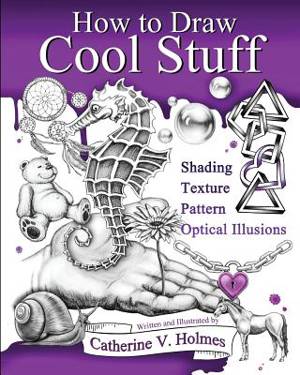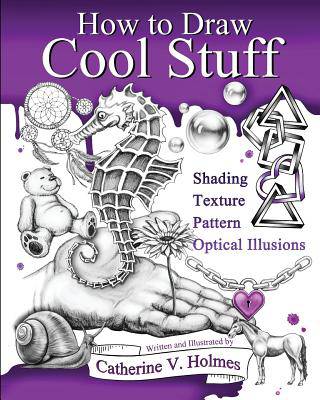
- Afhalen na 1 uur in een winkel met voorraad
- Gratis thuislevering in België vanaf € 30
- Ruim aanbod met 7 miljoen producten
- Afhalen na 1 uur in een winkel met voorraad
- Gratis thuislevering in België vanaf € 30
- Ruim aanbod met 7 miljoen producten
Zoeken
How to Draw Cool Stuff
Basic, Shading, Textures and Optical Illusions
Catherine V Holmes
Paperback | Engels
€ 36,95
+ 73 punten
Uitvoering
Omschrijving
"How to Draw Cool Stuff: Basics, Shading, Texture, Pattern and Optical Illusions" is the second book in the How to Draw Cool Stuff series. Inside you will find simple illustrations that cover the necessities of drawing cool stuff. Specific exercises are provided that offer step-by-step guidelines for drawing a variety of subjects. Each lesson starts with an easy-to-draw shape that will become the basic structure of the drawing. From there, each step adds elements to that structure, allowing the artist to build on their creation and make a more detailed image. Starting with the basic forms, the artist is provided a guide to help see objects in terms of simplified shapes. Instructions for shading to add depth, contrast, character and movement to a drawing are then covered. The varieties of texture and pattern that can be included in an artwork offer another layer of interest and depth to a design. These elements are necessary to indicate the way something looks like it feels in a work (texture) or creating the repetition of shapes, lines or colors (patterns). Illustrated optical illusions involve images that are sensed and perceived to be different from what they really are, showing examples of how the mind and the eyes can play tricks on each other. All you need is a piece of paper, a pencil and an eraser and you are ready to draw cool stuff. Once the drawing is complete, it can be colored, shaded or designed in any way you like to make it original. Following these exercises is a great way to practice your craft and begin seeing things in terms of simple shapes within a complex object.
Specificaties
Betrokkenen
- Auteur(s):
- Uitgeverij:
Inhoud
- Aantal bladzijden:
- 222
- Taal:
- Engels
Eigenschappen
- Productcode (EAN):
- 9780692382516
- Verschijningsdatum:
- 20/03/2015
- Uitvoering:
- Paperback
- Formaat:
- Trade paperback (VS)
- Afmetingen:
- 203 mm x 254 mm
- Gewicht:
- 449 g

Alleen bij Standaard Boekhandel
+ 73 punten op je klantenkaart van Standaard Boekhandel
Beoordelingen
We publiceren alleen reviews die voldoen aan de voorwaarden voor reviews. Bekijk onze voorwaarden voor reviews.











